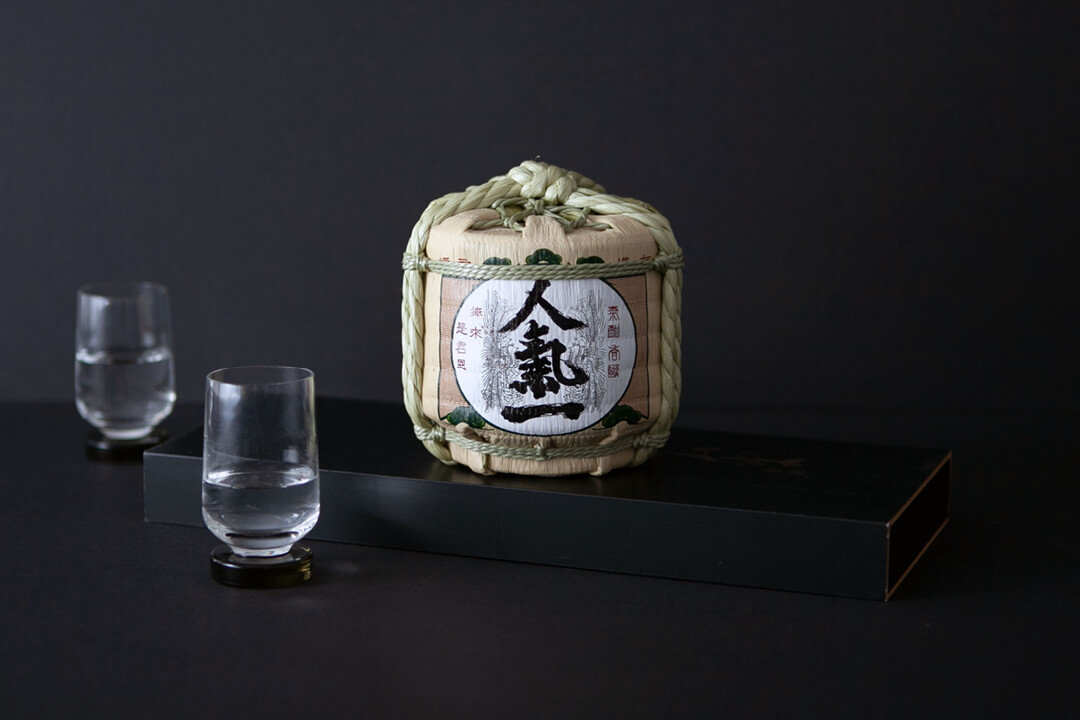Rice
in top form
Europe is becoming increasingly fond of sake, which is a
has a long tradition in Japan and its
production is connected with many rituals.
A small insight into the production of sake.
Even with some basic knowledge of sake production, it is easier to assess the essential factors for assessing the quality of a sake:
Ingredients
The main ingredients of sake are rice and water, which are brought to fermentation with the help of special sake yeasts and micro-organisms called koji mushrooms.
Of the approximately 270 different varieties of rice grown in Japan, about 100 varieties of rice are particularly suitable for the production of sake. Before sake is made, the rice grains are peeled. The higher the quality of the sake, the more of the outer husk of the rice grain is peeled off. The starches, proteins, fats and minerals contained in the outer layers influence the later fermentation process. If the outer layers are largely peeled off, so that only the kernel (called Shinpaku) remains, the later fermentation process can be more controlled.
Production
Each step of the production process is subject to a strict ritual in Japan and at each stage of production, quality control of quantities, temperature and duration is important, depending on the quality of the harvest of each rice variety, the outside temperature and humidity.
The rice is first washed and watered before being steamed. The steamed rice is cooled and placed in the Koji-Muro, a very important room in every sake factory. There are warm temperatures and high humidity. The spores of the koji mushroom are placed over the rice and the rice is left to rest for a few days so that the microorganisms of the koji mushroom can spread throughout the rice. The micro-organisms are important for the conversion of the starch contained in the rice into sugar, which is later converted into alcohol in interaction with yeast.
Many sake brewers are proud of their very special koji mushrooms, which are an important component for the later quality of the sake. In a sake brewery, the room where the koji mushrooms are grown is the place that contains the most important company secret and is entered with particular reverence.
In the process of converting starch into sugar, the koji mushroom releases a number of amino acids that are important for the umami flavour component of the later sake.
Water, rice and koji are added repeatedly over several stages before the rice components are separated from the liquid and the sake is filtered, pasteurised and stored before bottling. Traditionally, a ball made of fresh cedar twigs, which is hung in front of the entrance to the sake factory, announces that new sake has been created.
Quality
The quality of the sake is determined by the ingredients, the care in the whole process and the knowledge of the sake brewmaster. The various regions of Japan are proud of the sake rice varieties grown there and are convinced that the sake produced in their region harmonises particularly well with the dishes preferred there. Similar to whisky, the softness and clarity of the water is important, but so is the amount of koji mushrooms and yeast added.
The classification of the quality of sake is relatively simple compared to complex wine classifications and is essentially determined by two factors: The proportion of the outer husks of the rice grain that have been peeled off and the question of whether the brewer has added additional alcohol to the sake determine the classification of sake within the quality grades.
As a rule of thumb, the more layers of the rice grain have been peeled off, the higher the quality of the sake. High-quality sake is usually lighter and has a finer fragrance.
Start your own journey of discovery into the world of sake. With the GloriousMe download to categorise sake qualities on your mobile phone or with a printout of it, it’s worth entering a Japanese supermarket and looking at the sake qualities available there. We are sure that the fine taste of sake will find more and more lovers. We would be pleased if this little insight into the world of sake has aroused your interest in consciously selecting and enjoying sake.




